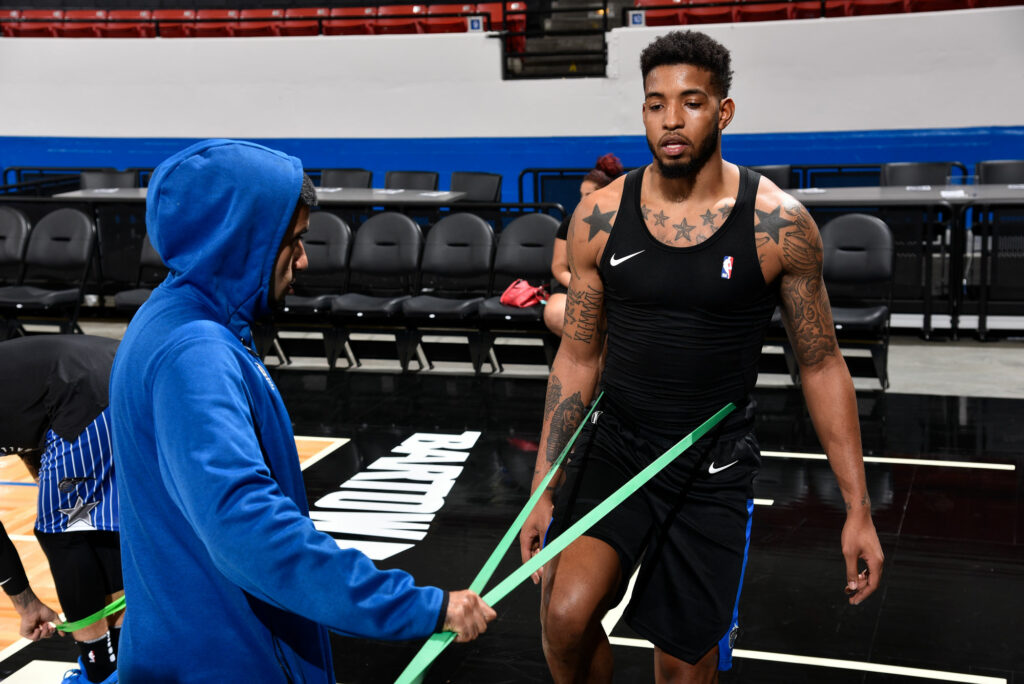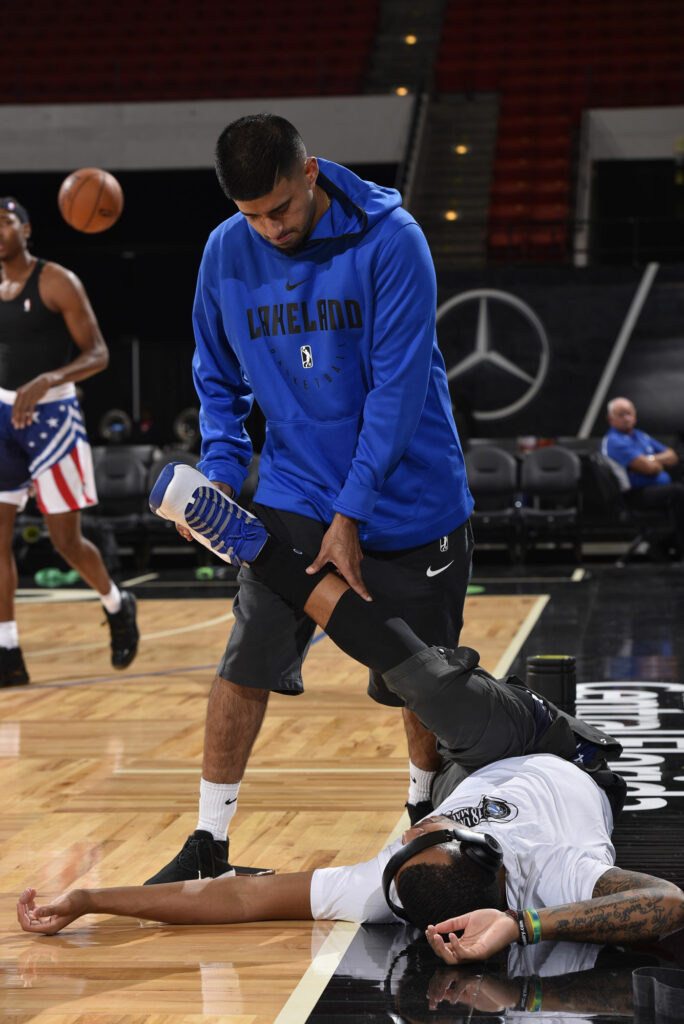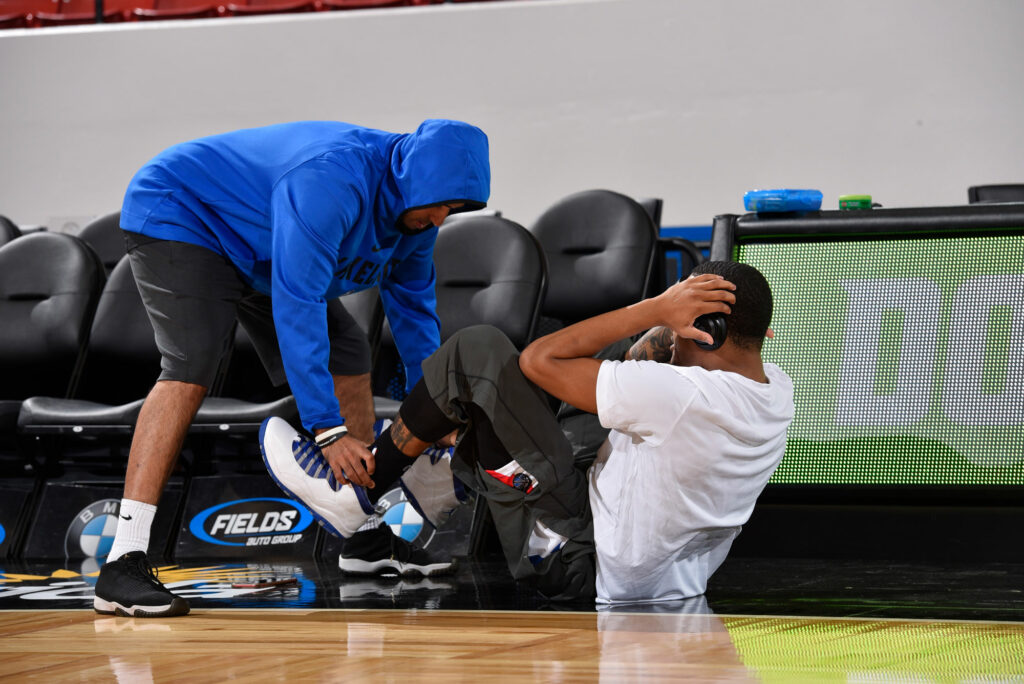An active recovery routine with the Lakeland Magic
Rest days are critical for high-level performance. Exercise produces a lot of mechanical stress on our bodies, with tiny tears forming in the muscles in order for them to repair and grow stronger. However, setting aside time to intentionally rest the muscles is necessary for them to truly repair, rebuild, and strengthen. As you seek to reach your fitness goals, it’s important to remember that incorporating an active recovery routine is also an essential part to training, too.
“The goal is to focus on ankle mobility, knee stability, hip mobility, and spinal stability/mobility,” says Lakeland Magic’s Strength and Conditioning Coach, Haseeb Fasihi. We’ve teamed up with Fasihi to find out the types of active recovery exercises these athletes typically have to focus on post-game and to inspire you to create the ideal active recovery routine to also give your body the rest and recovery it needs.

Self Myofascial Release
Foam Rolling
Using a full-size or half-size foam roller, lie parallel to the ground when working on the lower body, placing the foam roller in between you and the ground. While rolling before a workout, focus on long, smooth movements. It’s essential for chronically tight muscles. Foam rolling produces heat in the areas targeted, which will help the overall body regulate blood flow. If you feel a tight spot, you can roll over the area again with shorter strokes.
Hip Activation
Ankle Band Variations
Glute Bridges
2 sets x10

Clam Shells
2 sets x10
In a supine position, bend knees to 90 degrees and dorsiflex foot. Position the ankle bands right above the lower part of both quads at the same time (right above the knee, not on it). Raise the hips into a slow thrust while your legs are going against the resistance of the bands. Focus on contracting the glutes and slowly drop the hips to the ground to finish the rep.
Banded Terminal Knee Extensions (TKE)
Attach or tie a band around a pole. Insert one leg through the band to have resistance be applied away from your body. The band should focus on applying resistance away from the knee as the band is positioning directly around the knee, forcing the posterior part of the knee to be flexed and extended.
THE DAY AFTER (20 MINUTES)
Dynamic Pool Exercises
Hips and lower torso should be submerged underwater.
Quad to Hamstring Extensions
Grip and balance the side of the pool, and have your quad move in a flexing and extending motion while opposite leg helps balance with your hands.

Ankle and Hip Mobility
Ankle mobility under water is done by having your foot “write out” the whole alphabet to get every angle necessary.
Spine Mobility
Squat slightly and move the upper body in a chopping motion from a 0-180 degree angle. Also, attempt this in a supine position with 180-degree movements of your upper body, and your lower body bent 90 degrees to the side like in a fetal position.
